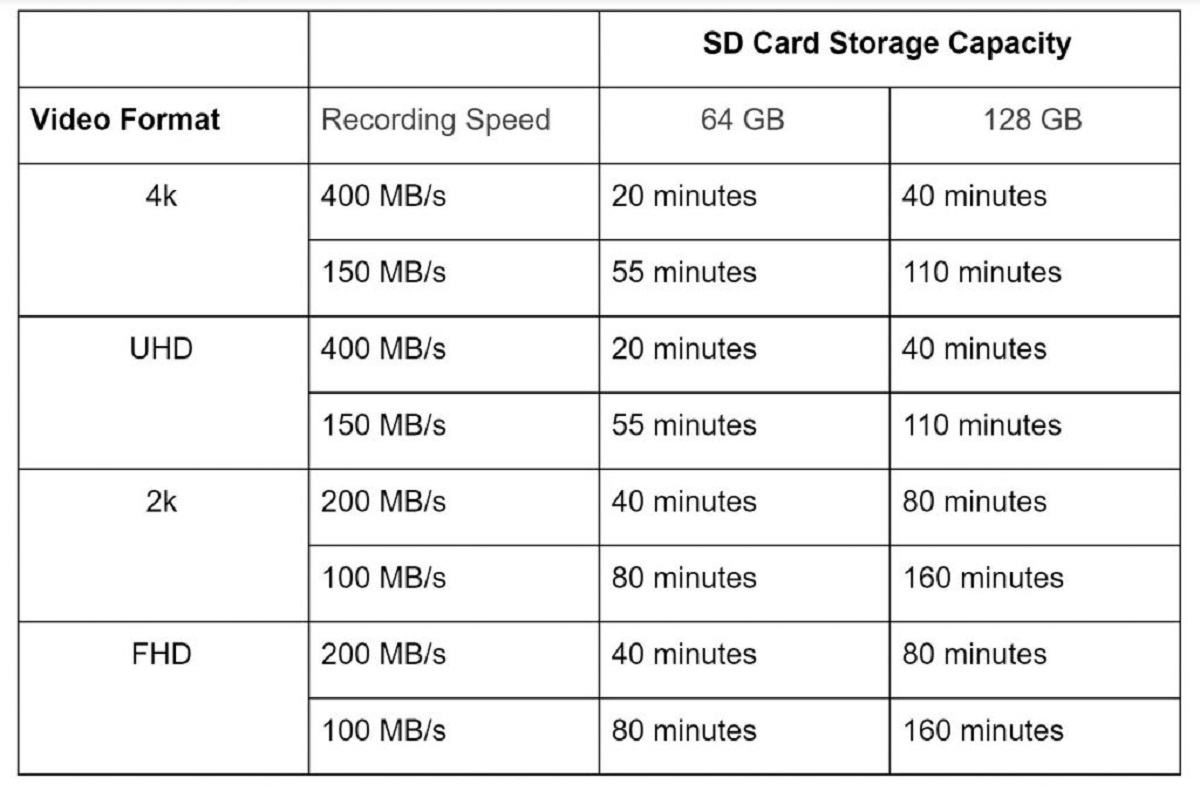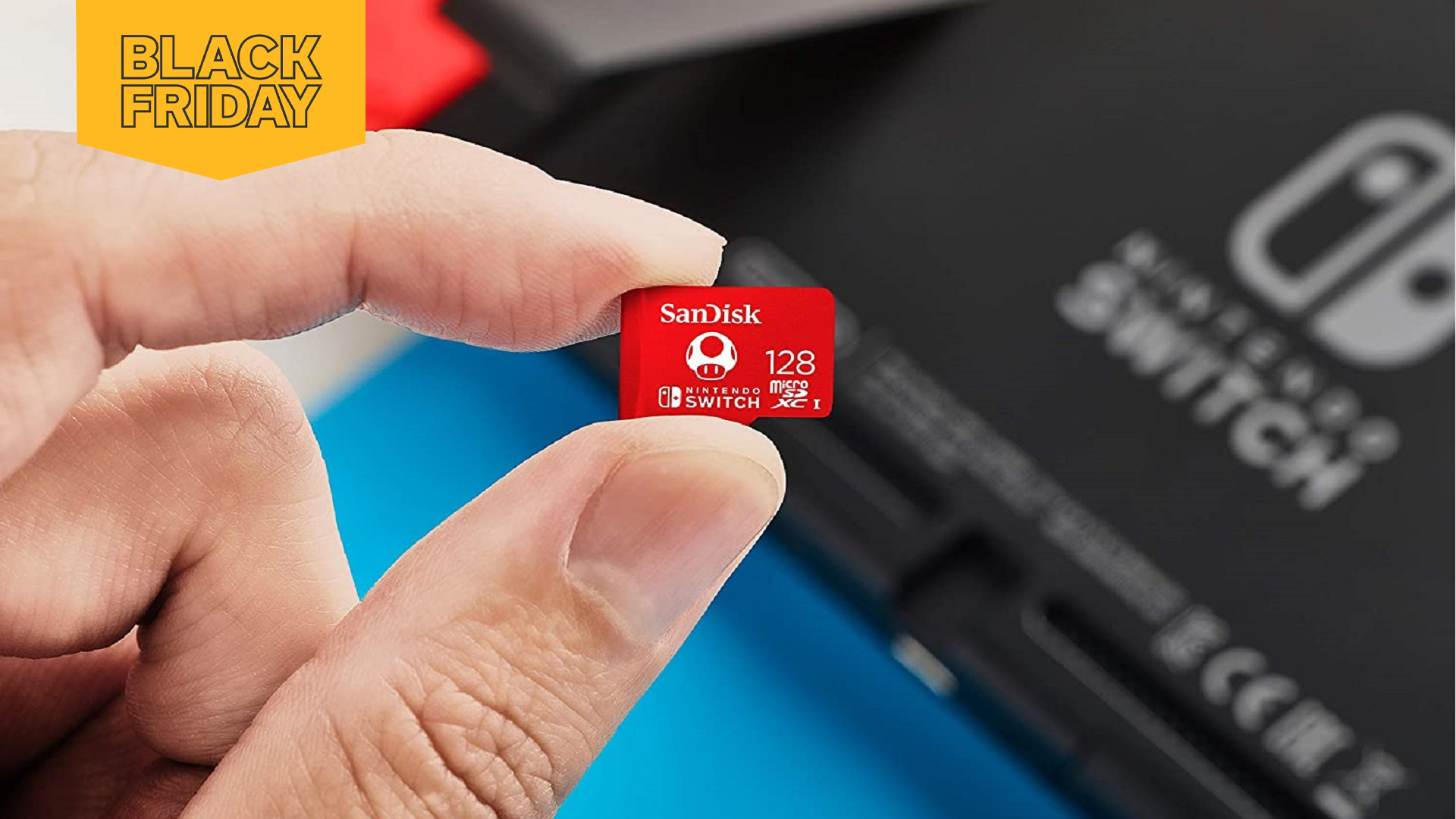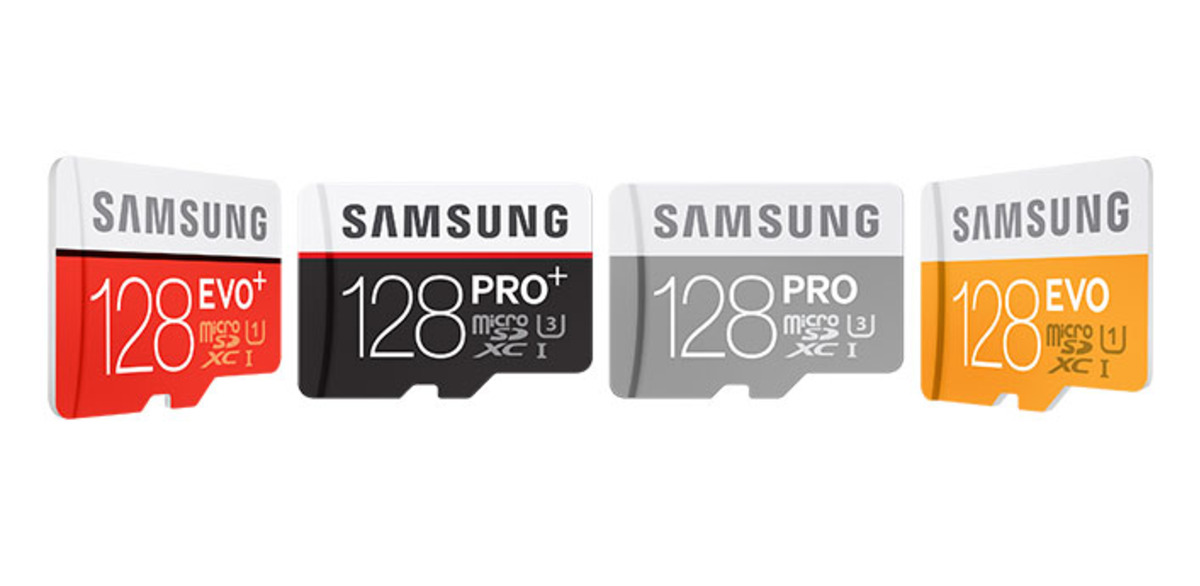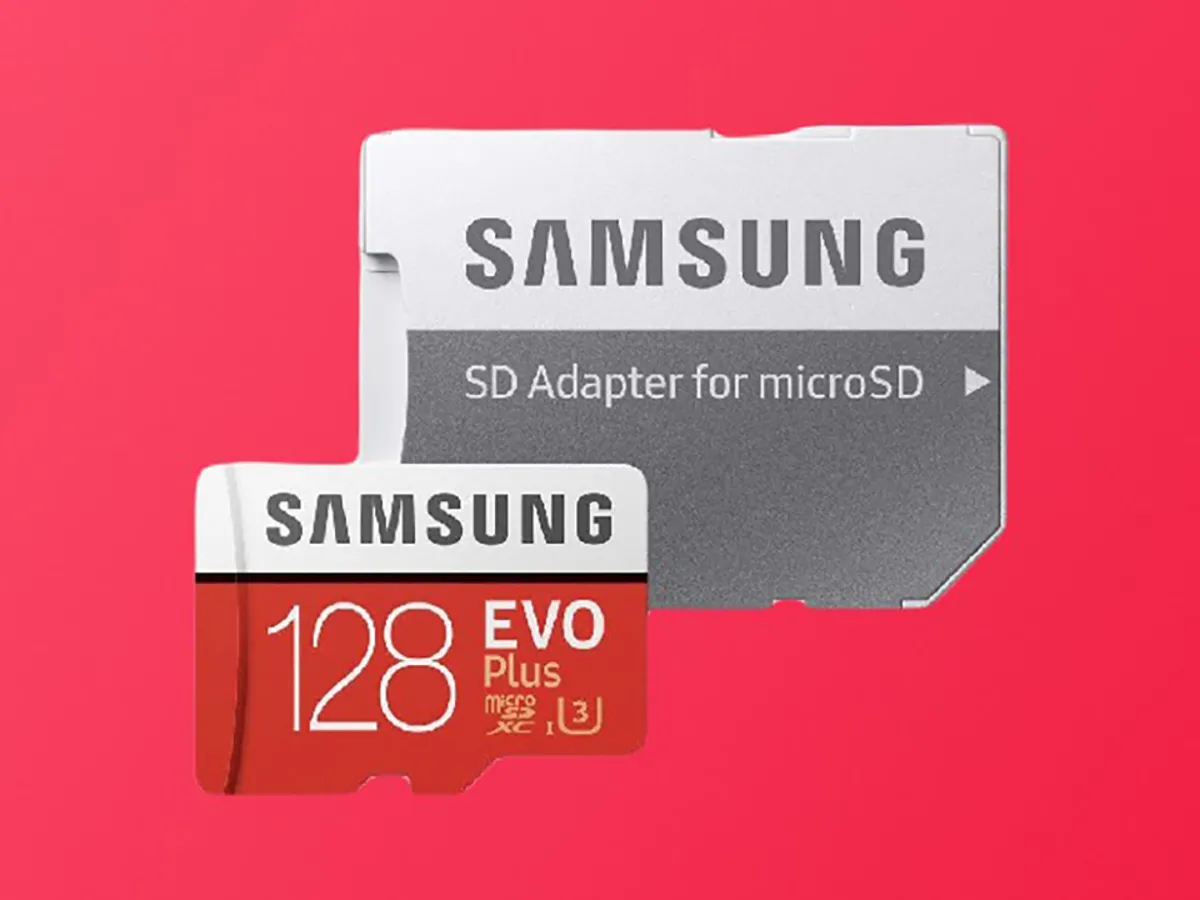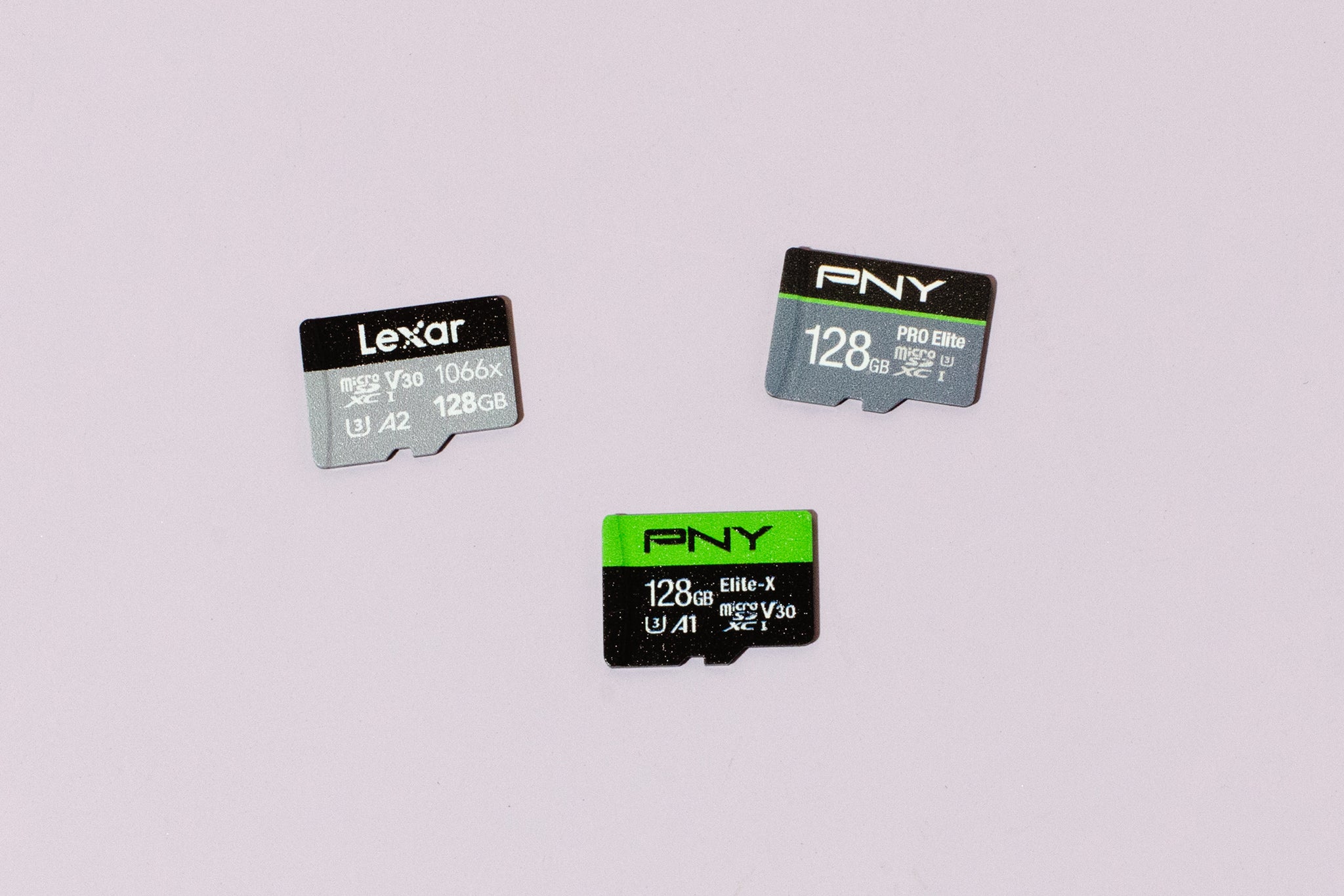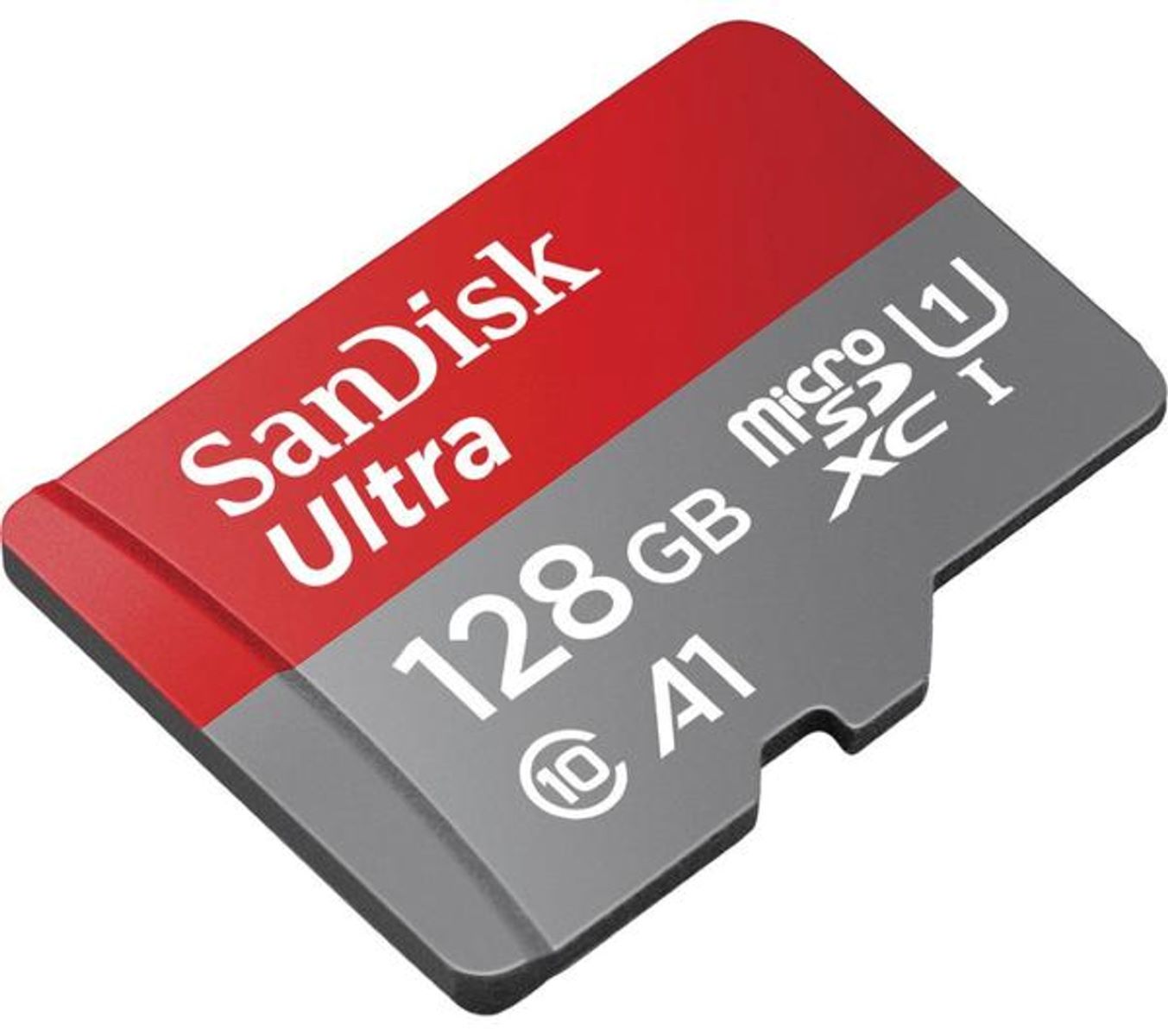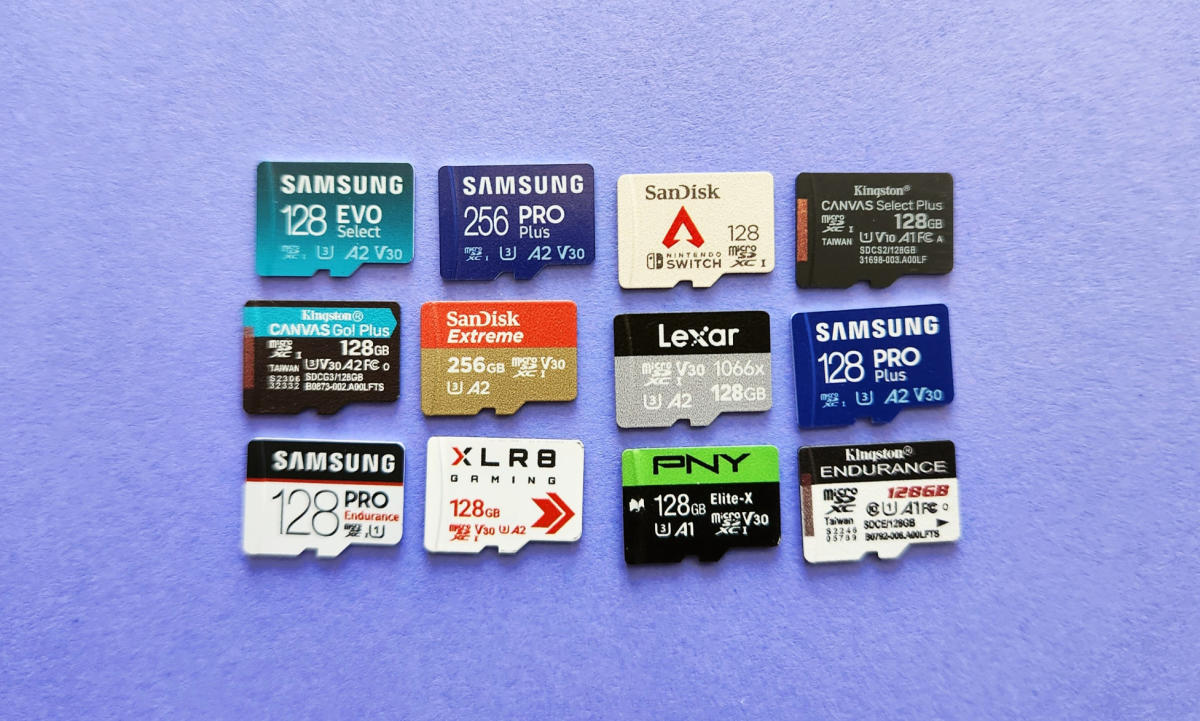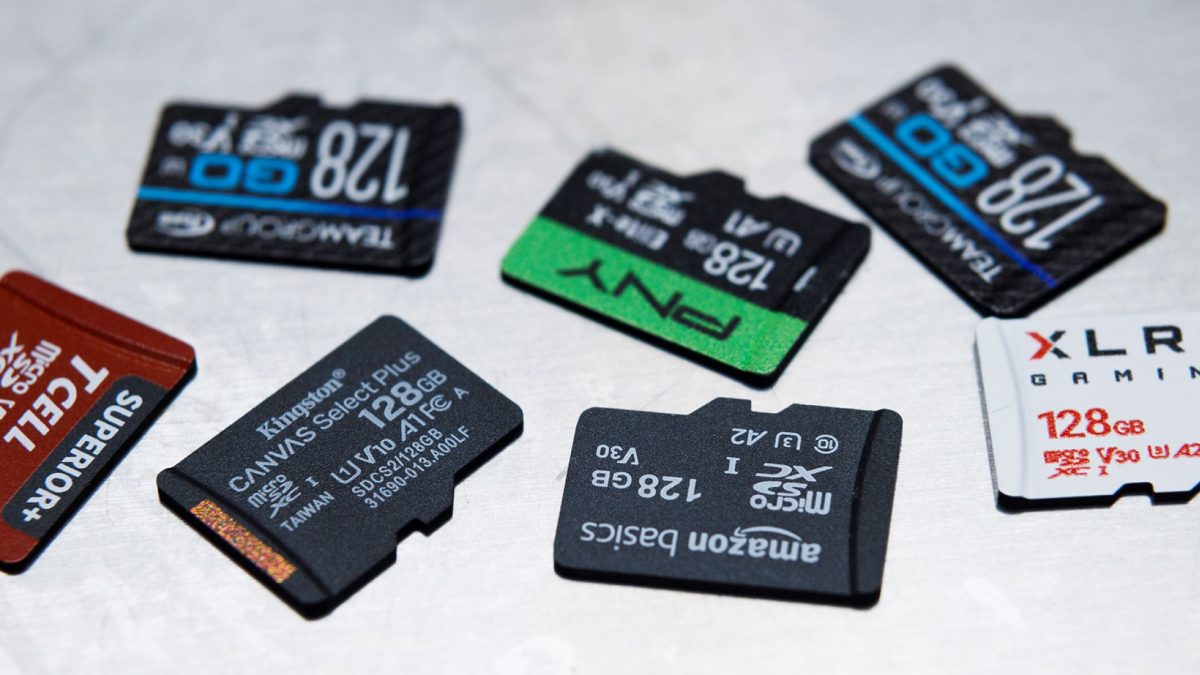Introduction
With the advancement of technology, capturing high-quality videos and photos has become easier than ever. Whether you are a professional videographer or an amateur enthusiast, having sufficient storage capacity is crucial for uninterrupted recording. When it comes to SD cards, one common question arises: How long will a 128GB SD card record? In this article, we will explore the factors that affect recording time and provide estimations for various video formats and shooting modes.
Before we dive into the specifics, it’s important to understand that several factors can influence the amount of footage a 128GB SD card can hold. These factors include video quality and format, bitrate, frame rate, compression, audio quality, and the shooting mode you’re using. By considering these factors, you can better estimate the recording time you can expect from your 128GB SD card.
Furthermore, it’s worth noting that the estimations provided in this article are general guidelines and can vary depending on the camera settings, file sizes, and the complexity of the scenes you are recording. It’s always a good idea to experiment and test the actual recording time with your specific camera and settings to get the most accurate results.
Factors that Affect Recording Time
When determining how long a 128GB SD card can record, it’s important to consider several factors that can affect the recording time. These factors include the video quality and format, bitrate, frame rate, compression, audio quality, and the shooting mode you’re using. Let’s examine each of these factors in more detail:
- Video Quality and Format: The quality and format of the video you are capturing play a significant role in determining the file size and, consequently, the recording time. Higher-quality videos, such as HD or 4K, tend to have larger file sizes and will consume more storage space.
- Bitrate: The bitrate refers to the amount of data being processed per second in the video. Higher bitrates result in better video quality but also increase the file size and, subsequently, reduce the recording time.
- Frame Rate: The frame rate denotes the number of frames or images displayed per second. Higher frame rates, such as 60fps, require more data to be stored per second, resulting in shorter recording times compared to lower frame rates like 24fps.
- Compression: Some cameras utilize compression algorithms to reduce file sizes while preserving video quality. However, higher levels of compression can impact the image quality and potentially decrease the recording time available on your 128GB SD card.
- Audio Quality: The audio quality settings you choose can also affect the amount of storage space used. Higher audio quality settings, such as uncompressed audio or higher sample rates, will result in larger file sizes and shorter recording times.
- Shooting Mode: The shooting mode you are using, such as continuous shooting or time-lapse photography, can significantly impact the recording time. Continuous shooting modes capture multiple images or frames in rapid succession, consuming more storage space compared to standard video recording.
Considering these factors, it becomes clear that estimating the recording time accurately is a complex task. However, by being aware of these key factors and understanding how they influence storage space usage, you can make more informed decisions when recording and determining the length of time your 128GB SD card can handle.
Video Quality and Format
The video quality and format you choose for your recordings have a significant impact on the file size and, consequently, the recording time of your 128GB SD card. Higher-quality videos tend to have larger file sizes, requiring more storage space. Let’s delve into this factor further:
When it comes to video quality, two common formats are widely used: HD (High Definition) and 4K (Ultra High Definition). HD videos have a resolution of 1920×1080 pixels, while 4K videos boast an impressive resolution of 3840×2160 pixels. The higher resolution of 4K videos results in more pixels being captured, leading to larger file sizes compared to HD videos.
If you opt for HD video recording, your 128GB SD card can store a substantial amount of footage. However, keep in mind that different cameras and compression settings can influence the file size. Typically, an hour of HD video footage can range from 4GB to 8GB, depending on factors like bitrate and compression.
On the other hand, 4K videos have four times the resolution of HD videos, resulting in significantly larger file sizes. Recording 4K videos can consume storage space at a faster rate. In general, an hour of 4K video footage can range from 20GB to 40GB, depending on the camera settings and compression used.
Additionally, it’s essential to consider the format in which the videos are recorded. Common video formats include H.264, HEVC (High Efficiency Video Coding), and others. H.264 is widely supported and provides a good balance between file size and video quality. HEVC, also known as H.265, offers better compression efficiency, allowing for smaller file sizes without compromising video quality. However, not all devices may support HEVC playback
Therefore, when considering the video quality and format, it is essential to strike a balance between the desired video resolution, compatibility with playback devices, and the amount of storage space available on your 128GB SD card.
Bitrate
The bitrate of a video refers to the amount of data processed per second, measured in kilobits per second (Kbps) or megabits per second (Mbps). It plays a crucial role in determining both the video quality and the file size, which in turn affects the recording time on a 128GB SD card.
A higher bitrate typically results in better video quality as more data is allocated to each second of footage. However, this also leads to larger file sizes and a shorter recording time. Conversely, a lower bitrate reduces the file size but may result in a lower quality video.
When selecting the bitrate for your recordings, it’s important to consider the intended use of the footage. If you are filming for professional purposes or seeking optimal video quality, a higher bitrate may be preferred. On the other hand, if you are capturing casual videos or need to save storage space, a lower bitrate may be sufficient.
For most situations, a bitrate between 10Mbps to 20Mbps provides a good balance between video quality and file size. However, it is worth noting that different cameras and recording devices may have different bitrate options available.
It’s also essential to consider the specific requirements of the target platform or device where the video will be viewed. Some platforms have maximum bitrate limits, and exceeding these limits may result in automatic compression and potential quality loss.
Overall, when choosing the bitrate for your recordings, be mindful of finding the right balance between video quality and file size to maximize the recording time on your 128GB SD card while meeting your desired output requirements.
Frame Rate
The frame rate of a video refers to the number of frames or images displayed per second. It has a significant impact on the file size and, consequently, the recording time of a 128GB SD card. The frame rate directly affects the amount of data that needs to be stored per second of footage.
Standard frame rates for video recording include 24fps (frames per second), 30fps, and 60fps. The choice of frame rate depends on personal preference and the desired effect of the video. Higher frame rates, such as 60fps, result in smoother and more fluid motion but require more data to be stored compared to lower frame rates like 24fps.
When it comes to estimating the recording time, it’s important to consider the impact of frame rate on the file size. Higher frame rates capture more frames per second, resulting in larger file sizes and shorter recording times on a 128GB SD card. For example, recording at 60fps will consume more storage space compared to recording at 24fps for the same duration.
Another aspect to consider is compatibility with playback devices and platforms. While higher frame rates offer smoother playback, not all devices or platforms support playback of all frame rates. Therefore, it’s important to ensure the chosen frame rate is compatible with the intended viewing platform.
If you prioritize longer recording times and have sufficient storage capacity, opting for a lower frame rate like 24fps can be a practical choice. This frame rate is commonly used in film and provides a cinematic feel to the footage. However, if you require smoother motion or plan to capture fast-paced action, a higher frame rate like 60fps may be preferred, despite the shorter recording time.
To optimize the recording time on your 128GB SD card, carefully consider the desired appearance of the video, compatibility with the intended playback devices, and the available storage space when selecting the frame rate for your recordings.
Compression
Compression plays a crucial role in reducing the file size of videos without significantly sacrificing video quality. Different compression algorithms are used by cameras and recording devices to achieve this, and it directly impacts the recording time on a 128GB SD card.
When a video is compressed, redundant or unnecessary data is removed, resulting in a smaller file size. However, higher compression levels can lead to a loss or degradation of video quality, which is known as lossy compression.
The degree of compression can vary based on the settings chosen on the camera or recording device. Some cameras offer different compression options, allowing you to strike a balance between file size and video quality.
It’s important to note that higher compression levels reduce the file size but may result in a noticeable loss of detail or an increase in artifacts such as pixelation or blurring. On the other hand, lower compression levels generate higher-quality videos but require more storage space.
When selecting the compression settings, consider the intended use of the footage and the available storage capacity on your 128GB SD card. If you prioritize longer recording times or need to save storage space, you may opt for higher compression settings. However, if video quality is crucial, choose lower compression levels to preserve as much detail as possible.
Additionally, consider the compatibility of the chosen compression format with playback devices and editing software. Make sure the format you select is supported by the platforms where you plan to view or edit your videos.
Overall, finding the right balance between compression level, video quality, and storage space is essential to maximize the recording time on your 128GB SD card while preserving the desired level of visual fidelity for your videos.
Audio Quality
While we often prioritize the visual aspect of video recordings, audio quality is equally important in creating a captivating and immersive experience. The audio settings you choose can also impact the amount of storage space used on your 128GB SD card.
When it comes to audio quality, you have various options to consider. Higher audio quality settings, such as uncompressed audio or higher sample rates, can result in better sound reproduction but can also lead to larger file sizes.
Uncompressed audio formats, such as WAV or PCM, preserve the highest level of audio fidelity but tend to generate larger file sizes compared to compressed audio formats like MP3 or AAC.
Sample rate refers to the number of audio samples captured per second. Higher sample rates, such as 48 kHz or 96 kHz, capture more detail and can enhance the overall audio quality, but they come at the cost of larger file sizes.
When estimating recording time on your 128GB SD card, keep in mind that audio typically takes up a smaller portion of the overall file size compared to video. However, if you are recording long videos with high-quality audio, it can still impact the total storage space used.
Consider the intended use of your recordings and determine the required audio quality accordingly. For casual videos or projects where audio quality is less critical, opting for compressed audio formats or lower sample rates can help save storage space and extend the recording time.
On the other hand, if you require pristine audio quality or plan to use the footage for professional purposes, you may want to choose uncompressed formats or higher sample rates. Just be aware that this will result in larger file sizes and potentially shorter recording times.
Ultimately, striking a balance between audio quality and storage space is crucial to maximize the recording time on your 128GB SD card while meeting your specific audio requirements.
Recording Time Estimations
Estimating the recording time on a 128GB SD card can be challenging due to the variability of factors such as video quality, bitrate, frame rate, compression, audio quality, and shooting mode. However, we can provide general estimations for different scenarios to give you an idea of what to expect.
1080p HD Video: In general, a 128GB SD card can store approximately 8 to 16 hours of continuous 1080p HD video footage. This estimation assumes a moderate bitrate, frame rate, and compression level.
4K Ultra HD Video: Recording in 4K will consume more storage space due to larger file sizes. On a 128GB SD card, you can expect to store approximately 2 to 5 hours of continuous 4K Ultra HD video, depending on the camera settings and compression.
High-Speed Action Video: Shooting high-speed action footage requires a higher bitrate to capture fast-moving objects. This results in larger file sizes and shorter recording times. With a 128GB SD card, you can estimate around 1 to 3 hours of continuous high-speed action video recording.
Time-Lapse Photography: Time-lapse photography involves capturing images at set intervals and then combining them into a video. The recording time estimation depends on the interval between shots and the total number of images captured. As a rough guideline, a 128GB SD card can store several thousand time-lapse photos.
Continuous Shooting Mode: Continuous shooting mode, also known as burst mode, captures multiple frames per second in rapid succession. This mode consumes more storage space due to the increased number of frames. Estimating the recording time in burst mode is challenging since it varies based on the specific camera settings and the subject being captured.
It’s crucial to note that these estimations are general guidelines and can vary depending on camera settings, compression levels, and the complexity of the scenes being recorded. Higher bitrates, frame rates, and audio quality settings will result in shorter recording times, while lower settings may extend the available recording time.
For the most accurate recording time estimation, it’s recommended to test your specific camera and settings beforehand and consider factors like the duration of your shooting sessions and the frequency of file transfers or backups to manage your storage capacity effectively.
1080p HD Video
1080p HD video has become a standard for high-quality video recording and playback. When considering the recording time of a 128GB SD card for this format, several factors come into play, including the bitrate, frame rate, compression, and audio quality settings.
On average, a 128GB SD card can store approximately 8 to 16 hours of continuous 1080p HD video footage. However, it’s important to note that this estimation is based on a moderate bitrate, frame rate, and compression level.
Higher bitrates will result in better video quality but will also consume more storage space. Conversely, lower bitrates can save storage space but may lead to a reduction in video quality. The specific bitrate settings on your camera will influence the actual recording time you can achieve on a 128GB SD card.
The frame rate you choose for your 1080p HD video recordings also affects the recording time. The higher the frame rate, the more frames are captured per second, resulting in larger file sizes and shorter recording times. Common frame rates for 1080p HD video include 24fps, 30fps, and 60fps.
The compression settings play a significant role as well. Different cameras offer various compression options that strike a balance between file size and video quality. It’s important to find the compression level that offers the desired balance while maximizing recording time on your 128GB SD card.
Lastly, the audio quality settings can impact the file size and, consequently, the recording time. Higher audio quality settings, such as uncompressed audio or higher sample rates, will result in larger file sizes and potentially reduce the available recording time.
Keep in mind that these estimations are general guidelines and can vary depending on the specific camera settings, compression levels, and the complexity of the scenes being recorded. It’s always recommended to test your camera and settings in advance to get a more accurate understanding of the recording time you can expect.
By considering your chosen bitrate, frame rate, compression, and audio settings, you can make informed decisions to maximize the recording time of a 128GB SD card for your 1080p HD video recordings.
4K Ultra HD Video
4K Ultra HD video has gained tremendous popularity in recent years due to its stunning level of detail and clarity. However, the increased resolution of 4K videos translates to larger file sizes, which affects the recording time on a 128GB SD card.
On average, with a 128GB SD card, you can expect to store approximately 2 to 5 hours of continuous 4K Ultra HD video footage. The actual recording time may vary based on several factors, including the bitrate, frame rate, compression, and audio quality settings chosen.
Higher bitrates are often necessary to maintain the same level of video quality in 4K recordings compared to lower resolutions. While this results in crisper imagery, it also requires more storage space. The bitrate settings on your camera will directly impact the recording time on a 128GB SD card.
The frame rate you select for your 4K recordings also affects the file size and, subsequently, the available recording time. Higher frame rates, such as 60fps, capture more frames per second, resulting in larger file sizes and shorter recording times compared to lower frame rates like 24fps or 30fps. Consider the desired level of smoothness and motion in your footage when choosing the frame rate.
Compression settings are critical to balancing file size and video quality in 4K recordings. Different cameras and recording devices offer various compression options. Experiment with the compression levels to find the sweet spot that provides efficient storage usage without compromising the visual fidelity of your 4K Ultra HD videos.
Lastly, audio settings can also impact the recording time of 4K videos. Higher audio quality settings, such as uncompressed audio or higher sample rates, result in larger file sizes, potentially reducing the available recording time on a 128GB SD card. Consider the importance of audio quality in your recordings and choose the appropriate settings accordingly.
It’s essential to keep in mind that these estimations are general guidelines, and the actual recording time of a 128GB SD card for 4K Ultra HD video may vary based on specific camera settings, compression levels, and the complexity of the scenes being recorded. Test your camera and settings in advance to get a more accurate understanding of the recording time you can expect.
By considering the bitrate, frame rate, compression, and audio settings, you can optimize the recording time of a 128GB SD card for your 4K Ultra HD video recordings while maintaining the desired level of quality.
High-Speed Action Video
High-speed action videos capture fast-moving subjects, requiring a higher bitrate and frame rate to ensure the clarity of each frame. However, these settings result in larger file sizes, which can impact the recording time on a 128GB SD card.
When recording high-speed action videos, the amount of storage space available becomes critical. With a 128GB SD card, you can estimate approximately 1 to 3 hours of continuous high-speed action video recording, depending on the specific camera settings and compression used.
The bitrate is a crucial factor in capturing high-speed action. A higher bitrate ensures that each frame contains sufficient data for optimal image quality, but it results in larger file sizes. Adjusting the bitrate can help balance video quality and the available recording time on your 128GB SD card.
The frame rate is equally important. Higher frame rates, such as 60fps or even 120fps, capture more frames per second, preserving the details of fast-paced action. However, this increased frame rate generates larger file sizes and reduces the available recording time compared to lower frame rates.
Compression settings play a role in managing file size. Experiment with different compression levels to find the optimal balance between video quality and storage space usage. The appropriate compression level should maintain the visual integrity of your high-speed action videos while ensuring sufficient recording time on a 128GB SD card.
Considering these factors, it’s crucial to plan accordingly when recording high-speed action videos. Ensure you have sufficient storage capacity available on your 128GB SD card and consider factors such as the duration of your shooting sessions and the frequency of file transfers or backups.
Lastly, keep in mind that the specific camera settings, the complexity of the action being recorded, and the compression settings can all impact the recorded video file sizes and, subsequently, the available recording time. It’s recommended to test your camera and settings beforehand to understand the actual recording time you can expect for your high-speed action videos.
By understanding the bitrate, frame rate, and compression settings, you can optimize the recording time on a 128GB SD card for your high-speed action videos while ensuring the desired level of video quality.
Time-Lapse Photography
Time-lapse photography is a creative technique that involves capturing a series of images at set intervals and then combining them into a video that showcases the passage of time. When considering the recording time on a 128GB SD card for time-lapse photography, several factors come into play, including the interval between shots and the total number of images captured.
Unlike continuous video recording, time-lapse photography captures individual frames over an extended period. Thus, the actual recording time can vary significantly based on the chosen interval between shots and the duration of the time-lapse sequence.
With a 128GB SD card, you can store several thousand time-lapse photos. However, it’s important to consider the file size of each image, which depends on factors such as the megapixel count of the camera and the image format (e.g., RAW, JPEG).
Higher-resolution images and uncompressed formats will result in larger file sizes, which can impact the total number of photos you can capture on a 128GB SD card. Consider the desired image quality, available storage space, and the length of the time-lapse sequence you want to create.
The interval between shots also affects the overall recording time. Shorter intervals create smoother time-lapse videos but also result in more images and, therefore, larger file sizes. Longer intervals reduce the number of images captured and save storage space but may result in choppier time-lapse sequences.
It’s crucial to plan your time-lapse photography session and estimate the number of photos you will capture based on the chosen interval and the length of the final time-lapse video. This will help you determine if a 128GB SD card is sufficient or whether you may need additional storage capacity.
Furthermore, consider the desired playback speed of the time-lapse video. Adjusting the frame rate during video creation can result in shorter or longer playback times. Experiment with different frame rates to achieve the desired effect and optimize the recording time on your 128GB SD card.
By taking into account the interval between shots, the total number of images, and the desired playback speed, you can optimize the recording time on a 128GB SD card for your time-lapse photography, while ensuring the desired image quality and duration of the final time-lapse video.
Continuous Shooting Mode
Continuous shooting mode, also known as burst mode, is a feature on many cameras that allows you to capture a rapid sequence of images in quick succession. This shooting mode is particularly useful when capturing fast-moving subjects or decisive moments. However, continuous shooting can have a significant impact on the recording time on a 128GB SD card.
Unlike traditional video recording, continuous shooting mode captures a burst of individual frames, resulting in a higher number of images being stored. This increases the overall file size, which can affect the available recording time on a 128GB SD card.
The specific number of images you can capture in continuous shooting mode depends on several factors, including the speed of your camera’s continuous shooting capabilities, the resolution of the images, and the file format used.
It’s important to consider the settings of continuous shooting mode, such as the frames per second (fps) rate and the duration of the burst. These settings will directly impact the number of images captured and the resulting file size.
Typically, cameras offer various burst rates, ranging from a few frames per second to high-speed bursts of over 10 frames per second. The higher the burst rate, the more images are captured in a shorter span of time, resulting in larger file sizes and a potential reduction in the available recording time on a 128GB SD card.
The resolution and file format also play a role in determining the file size of each image in the burst. Higher-resolution images and uncompressed formats, such as RAW files, will result in larger file sizes compared to lower-resolution images or compressed file formats like JPEG.
When planning to use continuous shooting mode, it’s essential to consider the total number of images you anticipate capturing in a session, the burst rate, the resolution of the images, and the file format. This will help you estimate the recording time on a 128GB SD card more accurately.
Keep in mind that the actual recording time in continuous shooting mode can vary based on the specific camera settings, the complexity of the subject being captured, and the file sizes of the individual images in the burst. It’s recommended to test your camera and settings in advance to understand the actual recording time you can expect in continuous shooting mode.
By considering the burst rate, number of images, resolution, and file format, you can optimize the recording time on a 128GB SD card for your continuous shooting sessions while ensuring sufficient storage capacity for your burst photography needs.
Conclusion
Understanding how long a 128GB SD card can record is crucial for any photographer or videographer. While the exact recording time varies based on multiple factors, including video quality, bitrate, frame rate, compression, audio quality, and shooting mode, we have provided estimates to help you plan your storage needs.
For 1080p HD video, a 128GB SD card can store approximately 8 to 16 hours of continuous footage, depending on the specific camera settings and compression levels. In contrast, 4K Ultra HD video requires more storage space due to higher resolution, resulting in approximately 2 to 5 hours of recording time on the same card.
When shooting high-speed action videos, expect a shorter recording time on a 128GB SD card, with an estimated range of 1 to 3 hours. Time-lapse photography allows you to capture several thousand images on a 128GB SD card, with the actual recording time depending on the interval between shots.
When using continuous shooting mode, the burst rate, resolution, and file format significantly affect the storage space used and, consequently, the recording time. It’s essential to consider these factors to estimate the available recording time on a 128GB SD card.
Remember that these estimates are general guidelines, and the actual recording time can vary based on specific camera settings, compression choices, audio quality, shooting conditions, and other factors.
To maximize the recording time on a 128GB SD card, optimize your camera settings, choose the appropriate video quality and format, bitrate, frame rate, compression, and audio settings based on your specific needs and available storage capacity.
It is recommended to test your camera and settings in advance to get a more accurate understanding of the recording time you can expect. Regularly backup or transfer your footage to free up storage space and avoid unexpected data loss.
By considering these factors and planning accordingly, you can make the most out of your 128GB SD card and ensure uninterrupted recording for your videos and photos.







